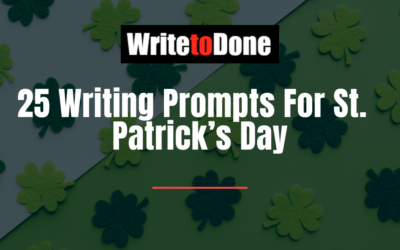Taking inspiration from famous writers is one of the best ways to encourage our own work.
By following the example of others, we can better our own writing efforts without having to reinvent the wheel. There is something comforting in knowing that writers we admire have faced the same struggles as us, and have found ways to overcome them.
Struggling with creativity is a challenge familiar to almost every writer.
On good days, the words flow effortlessly. When you read them back to yourself, you’re pleasantly surprised with the results. On bad days, hitting your word count is like drawing blood from a stone.
In the words of Elizabeth Gilbert, “I keep working because I trust that creativity is always trying to find me, even when I have lost sight of it.”
In that spirit, here are some suggestions from famous writers to help creativity find you.
Make Writing A Habit
Many writers throughout the ages have advocated the benefits of habitual writing.
Stephen King chooses to sit down to write at the same time every day. He has stated that the routine timing of his habit helps him reach his target of six solid pages.
Haruki Murakami also has a famously regimented schedule. While he is in the middle of writing a novel, he wakes at 4am each morning, writes for a set period of time, and then engages in a punishing exercise routine.
It’s easy to let our writing become an irregularly indulged luxury, rather than a non-negotiable habit. A lot of authors complain they don’t have time to write regularly, but that is almost never true. Try tracking your time for a week. You’ll almost certainly identify areas you can cut back on, such as social media use or Netflix watching. If you’re committed enough, you’ll even be willing to sleep for an hour less to get your writing done.
If you’re struggling to find that creative spark when you sit down to write, consider adopting a regular routine. After a while, you might find that creativity automatically shows up, almost on a Pavlovian basis.
Carefully Select Your Writing Environment
Just as your writing routine can be conducive to creativity, your environment can too.
Many writers are particular about writing in a specific location, as they feel it fuels their work. As you’d expect, the writing spaces favoured by famous authors differ greatly. Some have elaborate environments, full of stimulation. Others take a far more minimalist approach.
If you’re anything like E.B. White or Virginia Woolf, you’ll favor a writing space which gives you a view of nature. There’s something about a view of the natural world which enables us to create better invented worlds of our own. There has also been scientific research proving the benefits of spending time around nature.
Other writers like a space surrounded by books. Nigella Lawson, for example, writes in an environment where tall bookshelves tower over her. Similarly, Arthur Conan Doyle’s desk had plenty of books all around it.
For many, seclusion is the key to good work. Stephen King is known for having produced Carrie from his laundry room! Edith Wharton took this a step further, producing most of her work without even leaving her bed.
To feel more creative, experiment with the place you write. Try different environments until you find one that works for you. And don’t be afraid to switch things up if you’re feeling stuck.
Find The Time Of Day That Works For You
A lot of authors find that the time of day they write is a key component of their creativity.
Of course, for many of us, we don’t have the luxury of choosing when we write. We fit it in as and when we can.
But if you are able to do, it’s well worth taking the time to write at different times of day, and see which lends itself to the best output.
Don’t listen to anyone who says you have to write at a certain time of days. Both owls and larks can be successful authors.
It’s true that many of the greatest writers to ever live were morning people. Ernest Hemingway, Stephen King, and Maya Angelou chose the start of the day to do their work. Others, such as WH Auden and Simone de Beauvoir, split their day’s writing session in half, taking an extended break in the middle of the day.
Of course, there are plenty of examples of night owl authors as well, including Danielle Steel and Franz Kafka. For many, the stillness and peace of the night lends itself to creative work.
Perhaps you’ve fallen into writing at a certain time by default, without stopping to consider if another would work better. Mix things up and experiment. You might be pleased with the results.
Concluding Thoughts On Creativity
Hopefully, your creative optimism has been restored. By following in the footsteps of our literary heroes, we can fuel our own creativity.
So be sure to write habitually, choose an inspirational location, and experiment with the time of day.
You can never guarantee your muse will show up. But you can make it as easy and inviting as possible for them.
















